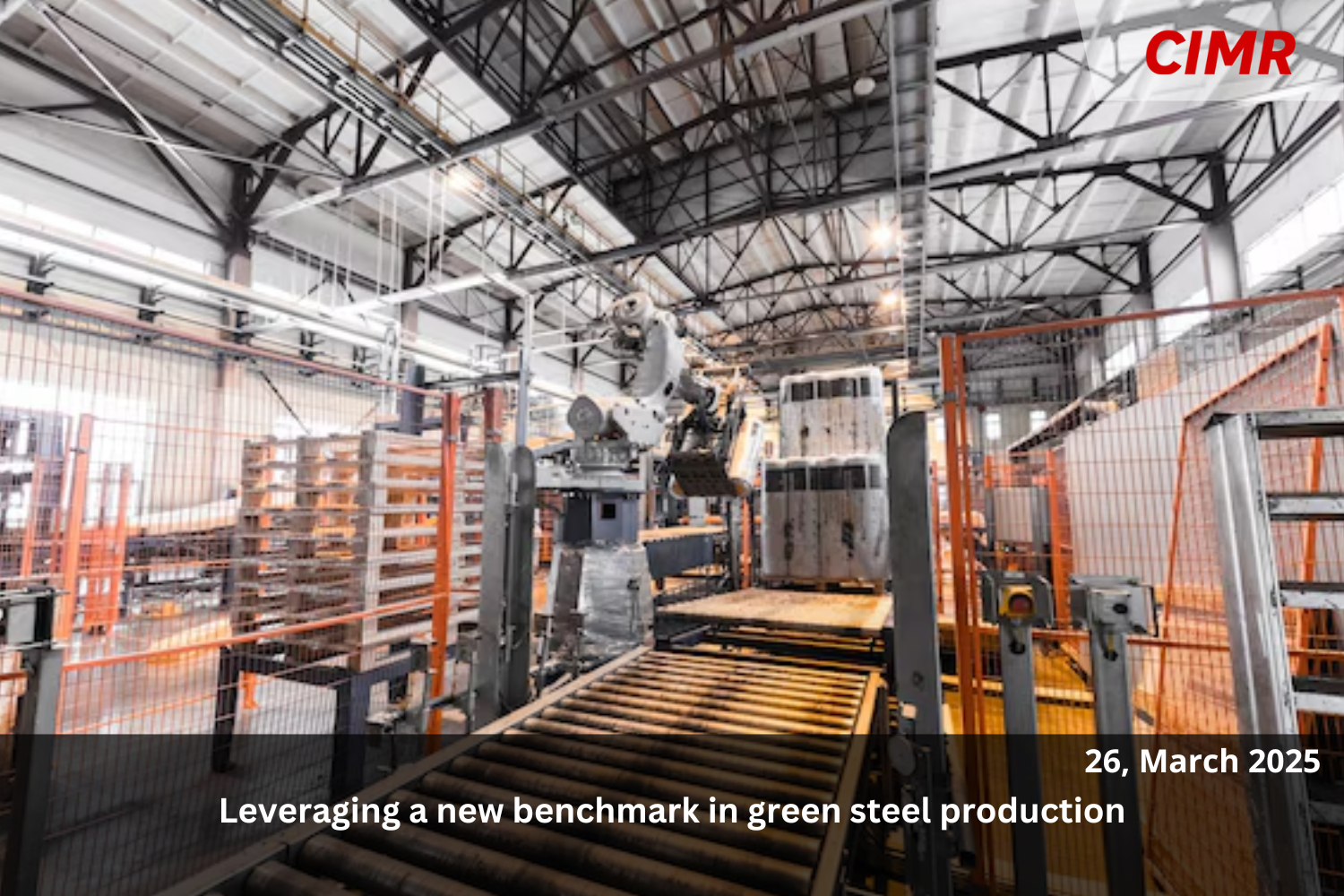The steel industry is undergoing a transformative shift towards green steel production, as the global push for sustainability intensifies. Traditional methods of steel production have long been reliant on fossil fuels, primarily coal and coke, which result in the emission of vast amounts of carbon dioxide. Green steel production.
Seeks to replace carbon-intensive processes with low-carbon or carbon-free alternatives, aligning with global sustainability goals and making significant strides toward mitigating the environmental impact of steel manufacturing. India, as the world’s second-largest steel producer, is at the forefront of this shift.
The concept of circular steel produced using renewable energy sources like solar, hydro, and wind is gaining traction. India’s steel recycling rate remains well below the global average of 85%, with only about 20% of steel in FY22 produced using domestic and imported scrap. To accelerate this transition,
Breakthrough technologies in green steel production are shaping the future of green steel, such as hydrogen-based steelmaking, electrolytic reduction, Electric Arc Furnaces (EAFs), and Carbon Capture, Utilization, and Storage (CCUS). With India ranking as the world’s second-largest steel producer, these innovations are essential for aligning economic.
Growth with sustainability will be well-positioned to tap into the expanding green economy, securing a competitive edge in a market that is becoming increasingly eco-conscious -Linked Incentive (PLI) scheme and the Green Steel Mission, which have been allocated Rs 15,000 crore the Indian government has launched key initiatives such as the Production.
The transition to green steel presents both challenges and opportunities for the economy. Financial mechanisms such as green bonds, blended finance, and concessional loans help de-risk investments sustainable economy. Companies that invest early in green steel technologies green steel technologies playing a key role in realizing the nation’s ambitious net-zero by 2070 goal.
The global steel industry is undergoing a major transformation as green steel production sets a new benchmark for sustainability. With steel accounting for nearly 7-9% of global CO₂ emissions, manufacturers are shifting towards low-carbon and hydrogen-based production technologies to reduce environmental impact while maintaining efficiency.
Key Innovations in Green Steel Production
- Traditional steelmaking relies on coal-fired blast furnaces, emitting large amounts of carbon dioxide. The shift to hydrogen-based direct reduced iron (H2-DRI) eliminates the use of coal, significantly cutting emissions. Companies like SSAB, ArcelorMittal, and Tata Steel are pioneering H2-DRI technology, paving the way for fossil-free steel production.
- Electric Arc Furnaces (EAF) with Renewable Energy
Electric arc furnaces (EAF) powered by renewable energy are another key advancement. Unlike conventional methods, EAFs can recycle scrap steel efficiently, reducing both raw material demand and carbon footprint. Leading manufacturers are integrating solar, wind, and hydro-powered grids into their steel production processes. - Carbon Capture and Storage (CCS)
To further mitigate emissions, steelmakers are investing in carbon capture and storage (CCS) technologies, which trap and store CO₂ emissions before they enter the atmosphere. This innovation ensures compliance with global climate targets while maintaining production ensuring a more sustainable future for construction, automotive, and industrial applications - efficiency.
The Road Ahead
The steel industry is at a turning point as green steel production sets a new benchmark for sustainability. With steel contributing nearly 7-9% of global CO₂ emissions, transitioning to low-carbon and hydrogen-based technologies is critical for achieving climate goals and maintaining competitiveness in an evolving market.
With increasing government regulations and corporate sustainability commitments, green steel is becoming the new industry standard. As investments in hydrogen, renewable energy, and carbon capture accelerate, steel manufacturers must adopt these innovations to stay competitive. By embracing this green transformation, the industry can achieve net-zero emissions.
- Group Media Publication
- Construction, Infrastructure and Mining
- General News Platforms – IHTLive.com
- Entertainment News Platforms – https://anyflix.in/





